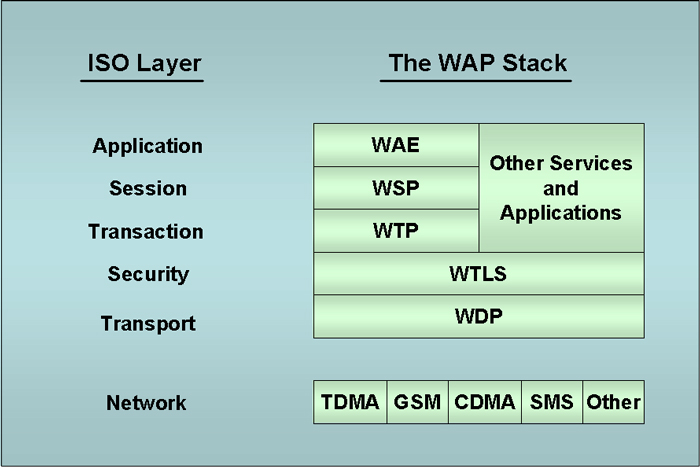
WAP - Wireless Application Protocol
| Web Enabled Wireless Phones.
In this webpage we will get into the protocols that focus on web enabled
cellular telephone technologies. WAP -
Wireless Application Protocol is a standard developed by a
number of wireless phone companies such as Ericsson, Nokia, Phone.com.
This consortium is called the WAP Forum. The overall goal of the
WAP forum is to develop standards that will allow Internet
communications and advanced telephone services to be supported on all
digital mobile phones and other wireless terminals. Interface Development. The Internet is largely based on protocols and standards such as HTTP - Hypertext Transfer Protocol and HTML - Hypertext Markup Language. WAP requires its own standards that will work in the screen formats, memory and processing capabilities available on phones and other devices.
Architecture. The WAP standard was devised to make use of as little bandwidth for operating overhead as reasonable. This helps make it a popular protocol on any network. The following diagram illustrates the WAP stack. |

| The overall WAP stack is divided into five
layers. The additional network layer includes technologies
beyond the scope of this course. This stack is quite similar to the OSI Reference Model we have studied elsewhere, but it doesn't exactly parallel. The most obvious additions are a security and transaction layer. The acronyms are described in more detail in the following bulleted list.
WAP Gateways are required to interface with the Internet. These gateways are usually software located on a mobile operator's server. These gateways handle requests from a WAP phone. They do things like the following
|